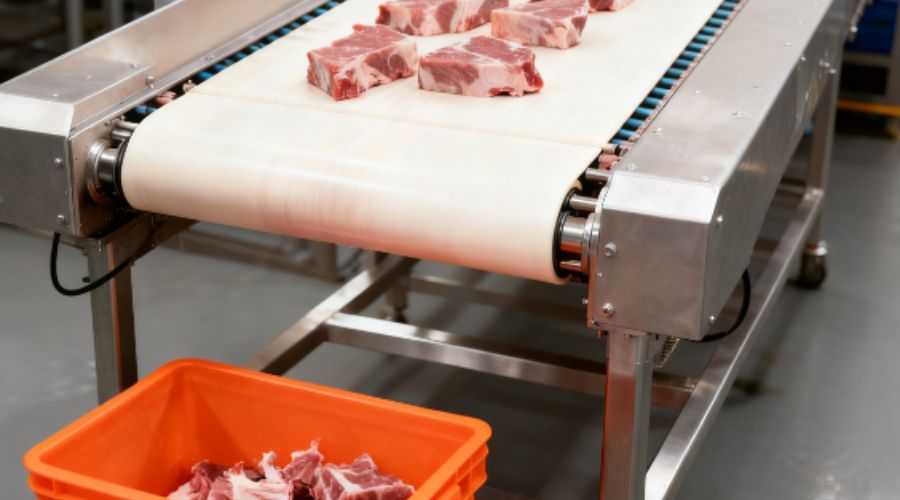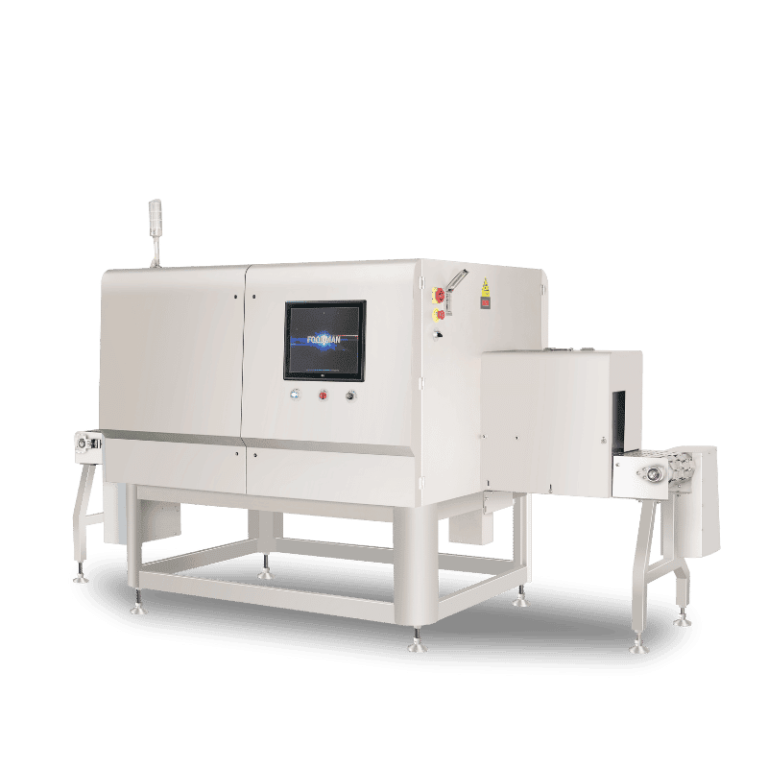Introduction: Why Metal Detection Matters Today
Modern food and packaging industries are constantly evolving to meet the demands of consumers and regulators alike. Ensuring safety, quality, and integrity is no longer optional—it’s a necessity. Metal detection plays a crucial role in safeguarding products and maintaining trust throughout the supply chain.

Global Food and Packaging Industries Facing Stricter Regulations
With global markets becoming more interconnected, food safety regulations are increasingly stringent. Authorities such as the FDA, EFSA, and ISO set high standards for contamination prevention, requiring manufacturers to implement reliable safety measures. In this context, metal detection systems are indispensable. Understanding how a metal detector works helps manufacturers comply with these regulations while minimizing the risk of recalls or safety incidents.
The Link Between Packaging Integrity and Consumer Trust
Packaging is not just a protective layer—it represents the first line of defense against contamination. Consumers rely on intact packaging as a guarantee of product safety. Even a small piece of metal in a product can severely damage brand reputation. By knowing what do metal detectors detect and what can a metal detector detect, companies can ensure that every package reaching the consumer is free from foreign objects, thereby strengthening trust and brand loyalty.
Metal Detection as Part of a Holistic Quality Control Strategy
Incorporating metal detection into a broader quality control program ensures comprehensive protection. Modern metal detectors in food industry settings are integrated with production lines to continuously monitor products for contamination. Understanding how the metal detector works or how a metal detector works in practice allows quality managers to optimize placement, sensitivity, and response times, creating a proactive approach to food safety.
By embedding metal detection into a holistic strategy, manufacturers not only prevent contamination but also improve operational efficiency, reduce liability, and maintain compliance with global safety standards.
Understanding Contamination Risks in Packaging Lines
Ensuring product safety goes beyond having high-quality ingredients; it requires vigilance across every step of the packaging process. Contamination can occur at multiple points, making metal detectors in food industry an essential safeguard.
Complexity of High-Speed Packaging Systems
Modern packaging lines often operate at high speeds to meet growing production demands. These systems involve synchronized conveyors, automated fillers, sealing machines, and labeling units. The faster the line, the higher the risk of small metal fragments going unnoticed. Understanding how a metal detector works in such environments is crucial, as advanced detectors can monitor products in real-time without slowing down production. High-speed systems require sensitive equipment that knows what do metal detectors detect and what can a metal detector detect under various packaging conditions.
Vulnerabilities: Conveyors, Sealing, And Cutting Equipment
Certain parts of packaging lines are particularly prone to causing contamination. Worn blades, faulty sealing mechanisms, or metallic components in conveyors can introduce fragments into products. Knowing how the metal detector works and strategically placing detectors at these vulnerable points ensures that foreign objects are caught before the product leaves the facility. This proactive approach minimizes the risk of recalls and protects consumer safety.
Case Studies of Product Recalls Caused by Unnoticed Metal Fragments
Real-world examples highlight the importance of metal detection. Several large-scale recalls have occurred when tiny metal pieces from cutting equipment or machinery wear were missed during production. These incidents not only lead to financial losses but also damage brand reputation. By implementing advanced metal detectors for food production lines and understanding how a metal detector works, companies can prevent similar issues and maintain trust with consumers.
The Working Principle of Metal Detection in Packaging
Metal detection technology is a cornerstone of modern food safety systems. It plays a vital role in ensuring that products reaching consumers are free from metallic contaminants. Understanding how a metal detector works helps manufacturers not only choose the right equipment but also optimize its placement, sensitivity, and integration with packaging lines, thereby improving both safety and operational efficiency.
From Electromagnetic Fields to Advanced Signal Analysis
At its core, a metal detector generates an electromagnetic field around the product as it passes through the inspection area. When a metallic object enters this field, it disrupts the signal, prompting the system to identify a potential contaminant. Modern systems go far beyond simple field disruption; they incorporate sophisticated signal analysis algorithms capable of distinguishing between actual contaminants and product-related noise, such as variations in size, shape, or composition. For manufacturers, understanding how the metal detector works and how a metal detector works is critical for ensuring consistent detection accuracy, especially in high-speed or complex packaging operations. With these technologies, even tiny fragments of metal—sometimes smaller than a millimeter—can be reliably detected without slowing down production.
Differences Between Ferrous, Non-ferrous, And Stainless Steel Detection
Not all metals are detected equally. Ferrous metals, which are magnetic, are typically the easiest to detect, while non-ferrous metals such as aluminum or copper require higher sensitivity and more precise calibration. Stainless steel, particularly non-magnetic types, presents the greatest challenge due to its weak interaction with the detector’s field. Understanding what do metal detectors detect and what can a metal detector detect ensures that production lines are equipped with detectors capable of handling all potential contaminants. This knowledge also helps in selecting the appropriate detection frequency, sensitivity levels, and system configuration to reduce false positives while maintaining maximum protection.

The Role of Product Effect: Moisture, Salt, And Packaging Materials
The product itself can significantly influence detection performance. Factors such as high moisture content, salt levels, and metalized packaging can create a “product effect,” which may mimic or mask the presence of metallic contaminants. Advanced metal detectors in the food industry use adaptive algorithms and dynamic calibration to compensate for these challenges, ensuring reliable detection without frequent false rejects. By understanding how does a metal detector work under these conditions, operators can adjust sensitivity settings and system parameters to maintain consistent safety standards. Proper training and system management ensure that even in complex packaging environments, metal fragments are detected before reaching the consumer, safeguarding both product integrity and brand reputation.
Integration into Packaging Line Operations
Integrating metal detectors in food industry into modern packaging lines is essential to ensure consistent detection of contaminants while maintaining high production efficiency. Proper placement, coordination with other equipment, and intelligent system management maximize both food safety and operational performance. In fast-paced production environments, even a small lapse in detection can lead to costly recalls or damage to brand reputation, which is why a well-integrated metal detection system is critical for any manufacturer.
Positioning Detectors at Critical Control Points
The effectiveness of metal detection depends heavily on strategic placement. Detectors should be installed at critical control points (CCPs) where contamination risks are highest, such as immediately after cutting, filling, or sealing stages. Understanding how a metal detector works enables operators to pinpoint these key points and ensure that what do metal detectors detect and what can a metal detector detect is optimized for each type of product and packaging material. Proper placement not only ensures maximum safety but also minimizes false rejects, reduces waste, and keeps production flowing smoothly. Additionally, using multiple detection points along the line can provide a layered defense, catching contaminants that might be missed at a single checkpoint.
Pairing with Automated Rejection Systems for Minimal Disruption
Detecting a contaminant is only one part of an effective quality control strategy; efficiently removing it is equally important. Modern packaging lines pair metal detectors for food production line applications with automated rejection systems, which instantly eject contaminated products without halting the entire line. Understanding how the metal detector works in real-time ensures that these rejection systems react immediately, preventing contaminated products from progressing further down the line. This integration reduces downtime, avoids production bottlenecks, and maintains a consistent output. By combining detection and automated rejection, manufacturers achieve how a metal detector works in a fully automated, reliable, and scalable manner—essential for high-speed production environments.

Synchronization with Weighing, Sealing, And Labeling Processes
Metal detection systems do not operate in isolation—they must be synchronized with other packaging line processes such as weighing, sealing, and labeling. Proper synchronization ensures that every product is accurately inspected without slowing down line speed or compromising quality. Understanding how does a metal detector work in conjunction with these processes allows production managers to optimize throughput, reduce human error, and maintain consistent product quality. In addition, integrating metal detectors with other line equipment enables comprehensive data collection, quality tracking, and traceability, helping manufacturers maintain compliance with food safety standards while maximizing operational efficiency.
Beyond Safety: Operational Advantages
While the primary role of metal detectors is to ensure food safety, modern systems also provide a wide range of operational benefits for packaging lines. From reducing downtime and costly recalls to enhancing production efficiency and strengthening brand competitiveness, the integration of metal detectors for food production line applications is now considered essential for manufacturers seeking both quality assurance and operational excellence. Advanced detection technology allows companies to not only prevent contamination but also streamline processes, reduce waste, and maintain consistent product standards across large-scale production.
Reducing Downtime and Costly Recalls
Metal contamination incidents can lead to significant production stoppages, expensive product recalls, and potential damage to a brand’s reputation. By understanding how the metal detector works, manufacturers can proactively identify and remove contaminants before they reach consumers. Knowing what do metal detectors detect and what can a metal detector detect allows quality control teams to implement preventive strategies, reducing unexpected downtime and avoiding costly emergency interventions. Investing in reliable, high-precision detection systems ensures production lines maintain continuous operation, even in high-speed or complex packaging environments. Moreover, reducing recalls not only saves money but also strengthens consumer trust, which is crucial for long-term business success.
Enhancing Production Efficiency with Real-Time Detection
Modern food industry metal detectors operate in real-time, continuously scanning every product as it moves through the packaging line. This capability allows manufacturers to maintain high-speed production without compromising food safety standards. Understanding how a metal detector works in these high-throughput scenarios enables operators to fine-tune system settings, balance sensitivity with line speed, and minimize false positives. The result is a smoother workflow, higher throughput, reduced product waste, and more efficient use of labor and resources. Real-time detection also allows for immediate corrective action, ensuring that any contamination is addressed instantly without halting the entire production line.
Meeting International Certification Standards
Compliance with international food safety standards such as HACCP, BRC, and FDA is critical for companies aiming to compete in global markets. Properly configured metal detectors in food industry not only help meet these standards but also provide verifiable data for audits and inspections. By understanding how does a metal detector work, quality assurance teams can document inspection processes, verify system calibration, and ensure traceability of all products. This proactive approach facilitates regulatory compliance, supports export approvals, and demonstrates a manufacturer’s commitment to delivering safe, high-quality products.
Strengthening Brand Competitiveness in Export Markets
A strong reputation for safety and quality is a key differentiator in today’s global food market. Companies that consistently employ advanced food metal detector technology not only protect consumers but also build trust in both domestic and international markets. Understanding how the metal detector works and integrating it seamlessly into the packaging line ensures that products consistently meet the highest safety and quality standards. This investment strengthens brand reputation, enhances customer loyalty, and opens opportunities for expansion into new export markets. Manufacturers who prioritize cutting-edge detection technology position themselves as industry leaders, gaining a competitive edge in increasingly regulated and quality-conscious global markets.
Industry-Specific Applications
Metal detection technology has become an essential part of modern packaging lines across diverse industries. Understanding how a metal detector works in different contexts allows manufacturers to customize their detection strategies, ensuring that every product meets the highest standards of safety and quality. Here we explore applications in several key sectors.

High-Volume Snack and Confectionery Lines
Snack foods, baked goods, and confectionery products often move at high speeds along packaging lines. Implementing metal detectors for food production line applications in these environments ensures that even the smallest metallic contaminants are caught before packaging. Operators must understand what do metal detectors detect and what can a metal detector detect, as metal fragments from machinery, packaging, or ingredient processing can pose serious safety risks. By knowing how the metal detector works, manufacturers can adjust sensitivity and placement to suit high-volume operations without disrupting throughput.
Protein Products: Meat, Seafood, And Ready Meals
Protein-rich products such as meat, poultry, seafood, and prepared meals present unique detection challenges due to high moisture content and irregular shapes. Advanced food industry metal detectors compensate for these variables, ensuring contaminants are accurately identified. Understanding how a metal detector works in these scenarios helps quality teams determine the best configurations for detecting ferrous, non-ferrous, and stainless steel fragments. Knowing what can a metal detector detect is especially critical in preventing recalls and maintaining consumer trust in sensitive product categories.
Dairy and Beverage Packaging Lines
Dairy products and beverages require metal detection integration with liquid and semi-solid packaging systems, such as cartons, bottles, and pouches. The “product effect” caused by moisture, sugar, or fat can interfere with standard detection, making it essential to understand how does a metal detector work in these contexts. By calibrating systems properly and understanding how the metal detector works, operators can ensure that what do metal detectors detect includes potential metallic fragments from processing equipment, lids, caps, or filling machines, while maintaining line efficiency.
Pharmaceuticals and Nutraceuticals Packaging
In pharmaceutical and nutraceutical production, even the smallest metal contamination can have severe consequences. High-precision food metal detector technology adapted for tablets, capsules, powders, and liquid supplements is essential to ensure compliance with safety regulations and industry standards. Understanding how a metal detector works allows operators to detect minute contaminants, while knowledge of what can a metal detector detect guides system settings for sensitive packaging and high-speed production lines. Integration into these sectors helps prevent costly recalls, ensures consumer safety, and maintains brand integrity in highly regulated markets.
Future Outlook: Smarter Metal Detection
As packaging lines become more complex and consumer safety expectations rise, the future of metal detectors for food production line applications is leaning toward smarter, more integrated systems. Advances in AI, multi-sensor technology, and IoT platforms are transforming how manufacturers approach contamination detection and operational efficiency. Understanding how a metal detector works today helps anticipate the capabilities of next-generation systems.
Ai-Driven Algorithms for Adaptive Sensitivity
Artificial intelligence is enabling metal detectors in food industry to adapt dynamically to different products and packaging materials. By analyzing patterns in real-time, AI-driven algorithms can automatically adjust sensitivity to detect even the smallest metal fragments without generating unnecessary false positives. Learning how the metal detector works with AI allows operators to achieve greater accuracy across diverse product lines. Knowing what do metal detectors detect and what can a metal detector detect helps production teams ensure the system is optimally calibrated for both high-speed and sensitive applications.
Combining Metal Detection with Vision Systems and X-Ray
The integration of metal detection with X-ray or vision technology is becoming a standard in advanced packaging lines. Multi-sensor systems can identify a broader range of contaminants and verify packaging integrity simultaneously. Understanding how a metal detector works in combination with other inspection methods allows operators to detect materials that might be missed by a standalone system. By knowing how do metal detectors work in food industry settings with multi-sensor setups, manufacturers can enhance overall safety, minimize recalls, and maintain regulatory compliance across complex product lines.
IoT And Cloud Platforms For Predictive Maintenance And Remote Monitoring
Next-generation food metal detectors are increasingly equipped with IoT capabilities, connecting machines to cloud platforms for real-time monitoring and predictive maintenance. This technology helps reduce downtime, optimize performance, and anticipate potential failures before they impact production. Understanding how a metal detector works in these connected systems allows facility managers to track performance metrics, ensure proper calibration, and respond to alerts remotely. Knowledge of what can a metal detector detect is integrated with data analytics to provide actionable insights, supporting continuous improvement and enhanced food safety across the production line.
Conclusion
Metal detection has evolved into a critical component of modern packaging lines. Its impact goes beyond simple contaminant detection, influencing operational efficiency, brand reputation, and consumer trust. By understanding how a metal detector works, manufacturers can maximize both safety and productivity while preparing for future technological advancements.
Metal Detection as a Silent but Essential Protector in Modern Packaging
While often unnoticed by consumers, food metal detectors act as silent guardians, protecting products from potentially hazardous metal contaminants. By knowing what do metal detectors detect and what can a metal detector detect, operators ensure that ferrous, non-ferrous, and stainless steel fragments are consistently identified before products leave the production line. Understanding how the metal detector works in various packaging contexts allows for precise placement and calibration, ensuring maximum protection without disrupting workflow.
Its Dual Role: Ensuring Food Safety and Driving Operational Excellence
Beyond safety, metal detectors in food industry contribute significantly to operational efficiency. Real-time detection reduces downtime, prevents costly recalls, and integrates seamlessly with automated rejection, weighing, and labeling systems. Knowing how does a metal detector work enables production teams to optimize line speed and sensitivity, balancing detection accuracy with high throughput. By understanding how a metal detector works, manufacturers achieve both consistent food safety and enhanced production performance.
Looking Ahead: Intelligent, Connected, And More Precise Detection Systems
The future of metal detectors for food production line applications is increasingly intelligent and connected. AI-driven algorithms, IoT monitoring, and multi-sensor integration promise more adaptive, precise, and predictive detection. Operators who understand how do metal detectors work in food industry settings will be better positioned to leverage these innovations. By mastering how a metal detector works, manufacturers can ensure that what can a metal detector detect is maximized, protecting consumers while supporting smart, efficient, and compliant packaging operations.
FAQ
Q: How are metal detectors integrated into high-speed packaging operations?
A: Detectors are positioned at critical control points (CCPs) and synchronized with weighing, sealing, and labeling processes, with automated rejection to avoid production disruption.
Q: What challenges affect detection accuracy?
A: Product effects like moisture, salt, and metalized packaging can interfere with detection. Advanced systems use adaptive algorithms and multi-frequency technology to maintain reliability.
Q: How do metal detectors support regulatory compliance?
A: They provide inspection logs, traceability, and verification for HACCP, BRC, and FDA audits, helping manufacturers meet global food safety standards.


